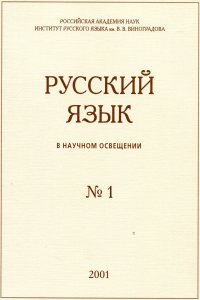Reduplication in Russian Sign Language
Abstract:
The paper deals with structural and functional features of reduplication in Russian Sign Language (RSL). Reduplication is one of the most important grammatical and derivational mechanisms in RSL. Hitherto it has not been an object of special research but was merely mentioned as a marker of aspect or nominal plurality, or as a means of denominal verb derivation. The paper considers in detail both motivated (polymorphemic) reduplication, wherein the reduplicated form has an original non-reduplicated counterpart, and unmotivated (monomorphemic) reduplication, wherein the reduplicated form does not have an original non-reduplicated counterpart. It is shown that motivated reduplication in RSL has a number of formal and functional similarities with the same phenomenon in spoken languages but also has some peculiarities that can be ascribed to the visual nature of sign languages. Unmotivated reduplication has not been previously considered in studies examining reduplication in sign languages. The paper shows that unmotivated reduplication in RSL is meaningful and productive, and its use is associated with the semantics of gesture.


